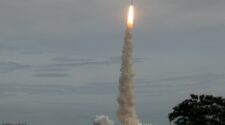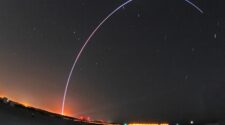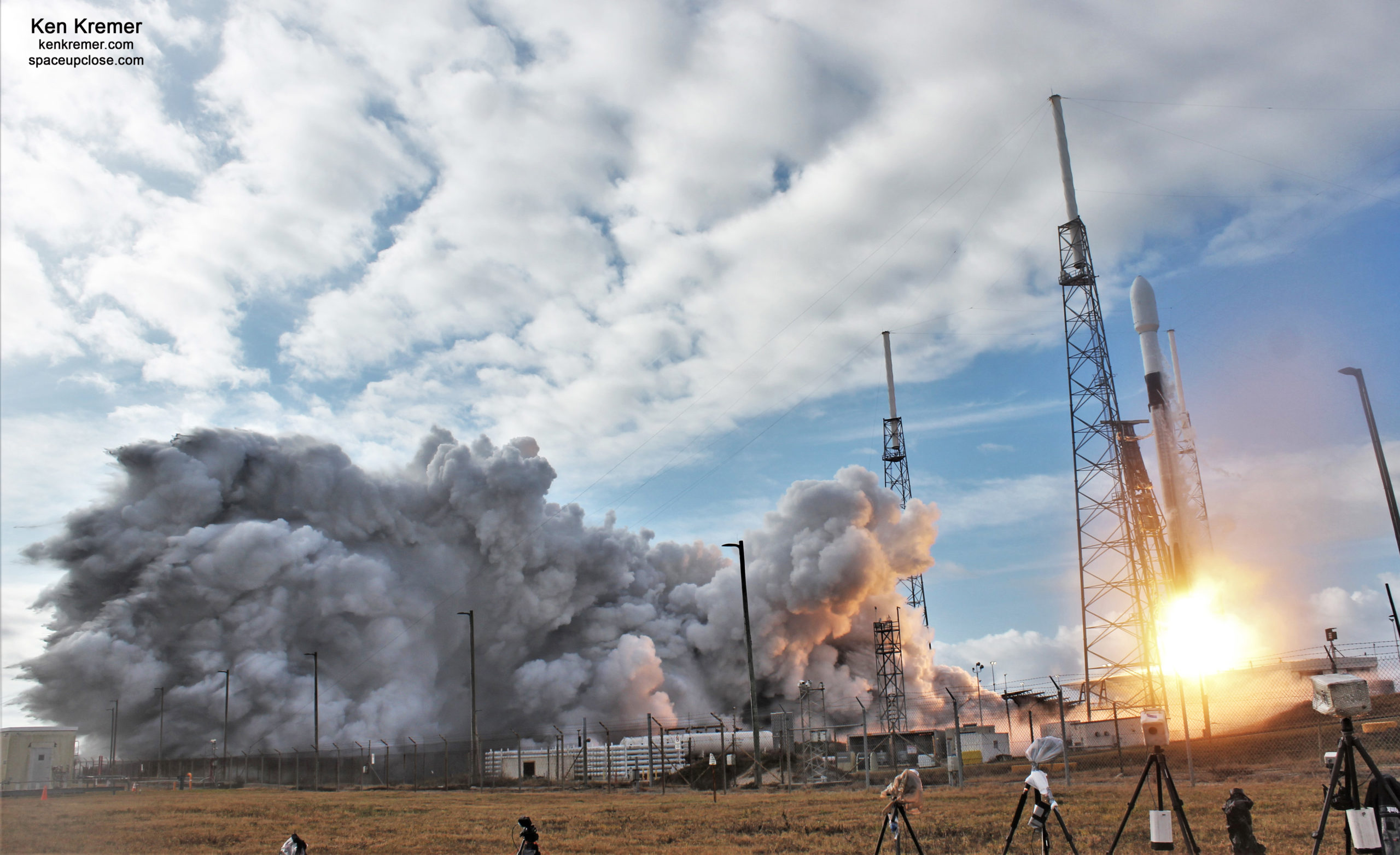
A recycled SpaceX Falcon 9 soared to orbit Sunday morning with a record-setting number of small satellites in a single flight on their first dedicated SmallSat Rideshare Program mission dubbed Transporter-1, also flying on a rare southern trajectory from Florida’s Spaceport.
Liftoff of the SpaceX Falcon 9 Transporter-1 rideshare mission carrying a total of 143 SmallSats finally took place on time at the opening of a 22-minute launch window at 10:00 a.m. EST, or 1500 GMT, Sunday, Jan. 24, 2021, from seaside Space Launch Complex 40 (SLC-40) on Cape Canaveral Space Force Station.
Dismal weather forced SpaceX to scrub Saturday mornings Falcon 9 launch attempt of Transporter-1 in the final moments of the countdown on Jan. 23 at T Minus 5 minutes loaded with a record-setting number of 143 satellites of all shapes and sizes on the firm’s third rocket liftoff of 2021 on a recycled first stage booster blasting off for a fifth time from Florida’s Space Coast.
The weather turned unexpectedly gloomy Saturday morning in the final hours leading up to the launch attempt and almost derailed Sunday’s attempt as well as rain was forecast during the 22 minutes long window – but luckily the showers and thick clouds gave way sufficiently to allow Sunday’s launch.
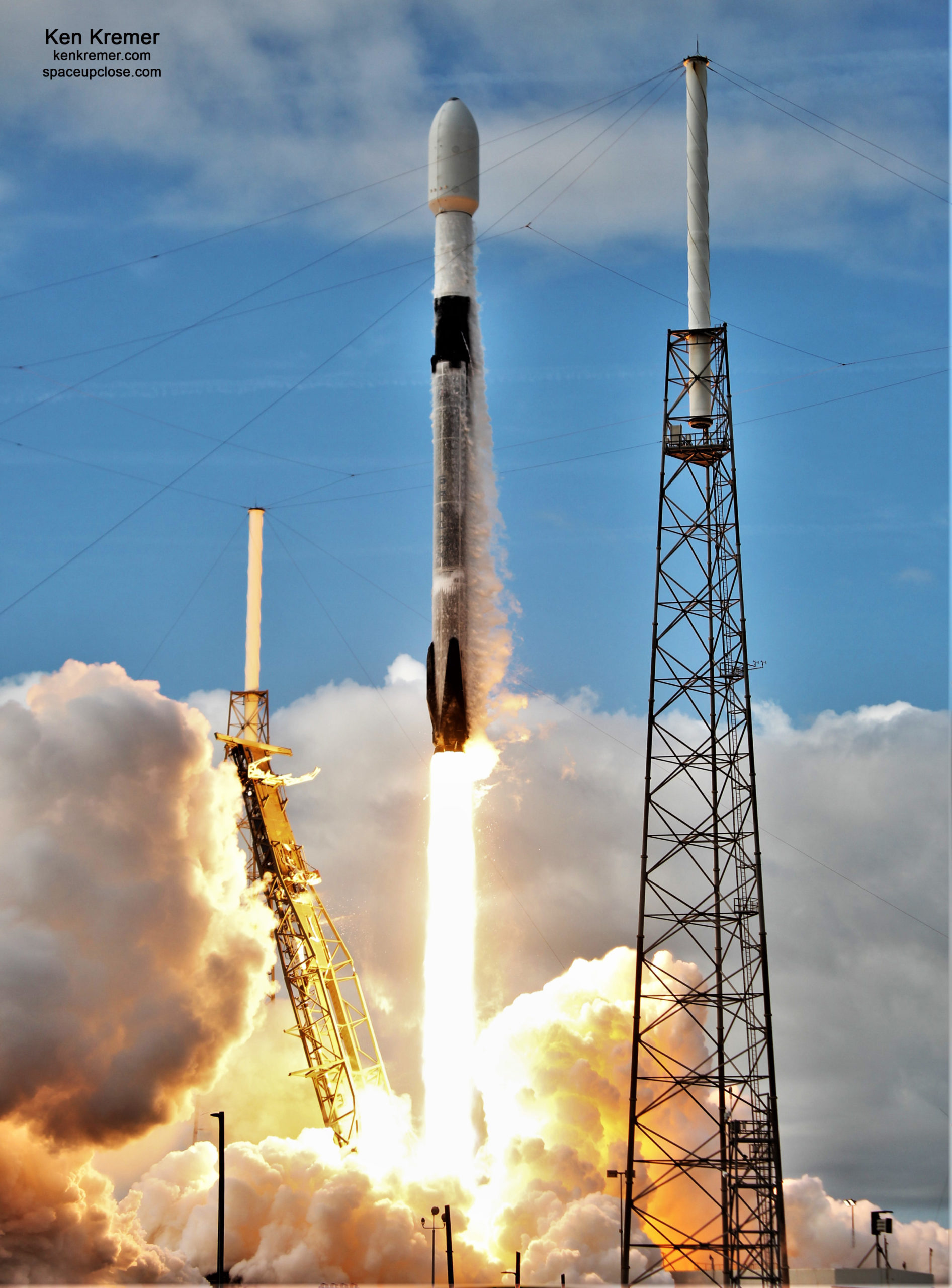
“Falcon 9 launches 143 spacecraft to orbit — the most ever deployed on a single mission — completing SpaceX’s first dedicated SmallSat Rideshare Program mission,” SpaceX tweeted.
Altogether 133 nano and microsatellites, as well as another 10 Starlinks, were encapsulated inside the nose cone – numbering 143 altogether. The nosecone fairings had been recovered from an earlier launch and were refurbished for this one.
The rideshare strategy enables much cheaper cost rides to space for small payload customers by spreading out the launch cost amongst a multitude of customers from government, industry, academia, and more, rather than buying a full-price dedicated Falcon 9 flight.
Transporter-1 carried payloads for Planet, Kepler Communications, Nanoracks, Spire, Capella Space, ICEYE, NASA, Spaceflight, Celestis, and a range of additional commercial and government customers in addition to SpaceX’s own Starlinks.
Encapsulated inside the nose cone on board this Falcon 9 rocket launch “are 133 commercial and government spacecraft (including CubeSats, microsats, and orbital transfer vehicles) and 10 Starlink satellites – the most spacecraft ever deployed on a single mission,” said SpaceX.
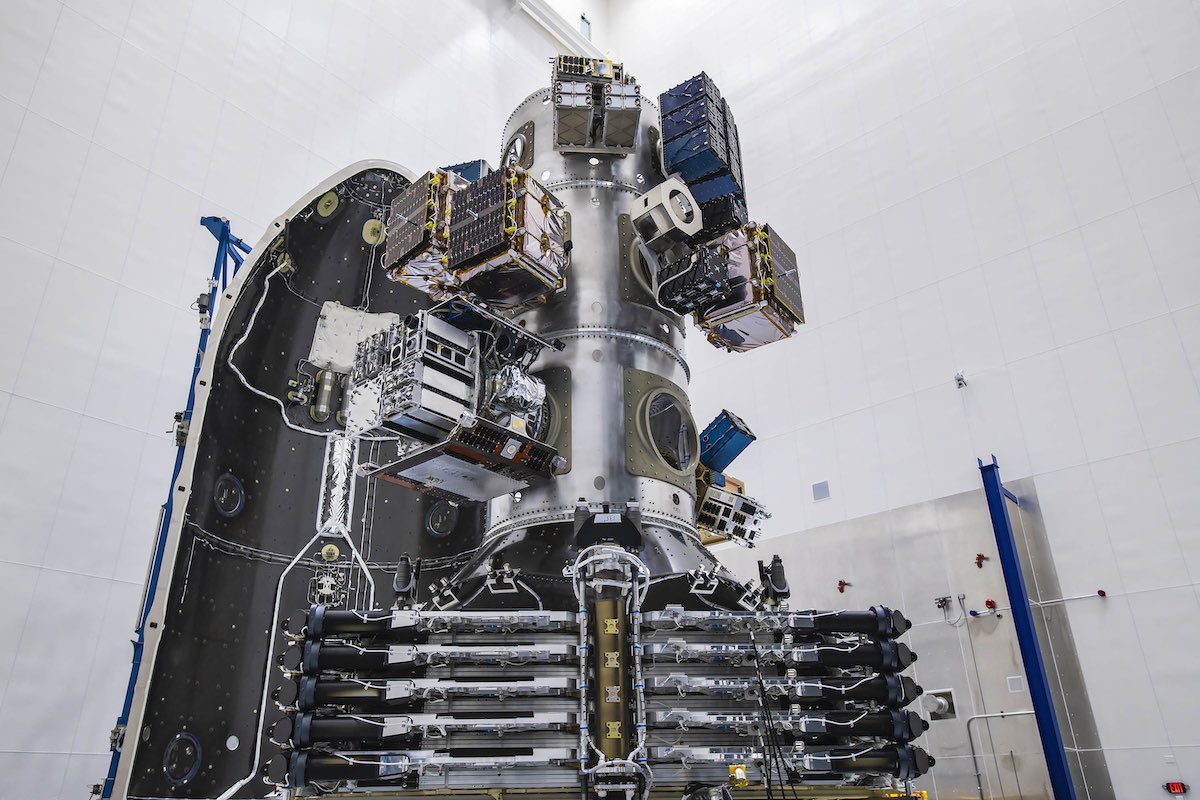
The smallsats targeted an orbit roughly 326 miles (525 kilometers) in altitude, with an inclination of 97.5 degrees to the equator.
Here’s a list of all 143 satellites launched on the Transporter-1 mission:
- 48 SuperDove satellites for Planet
- 36 SpaceBEE satellites for Swarm
- 10 Starlink satellites for SpaceX
- 8 GEN1 satellites for Kepler
- 8 Lemur-2 satellites for Spire
- 5 Astrocast satellites
- 3 HawkEye 360 satellites
- 3 ICEYE satellites
- 3 V-R3x satellites for NASA
- 3 ARCE-1 satellites for the University of South Florida
- 2 Capella satellites
- Sherpa-FX space tug for Spaceflight
- D-Orbit’s ION SCV Laurentius space tug
- iQPS-2 for iQPS of Japan
- YUSAT for Taiwan’s Ministry of Science and Technology
- IDEASSAT for Taiwan’s Ministry of Science and Technology
- UVQS-SAT for LATMOS of France
- ASELSAT for ASELSAN of Turkey
- Hiber Four for Hiber of the Netherlands
- SOMP2b for TU Dresden of Germany
- PIXL-1 for DLR of Germany
- Charlie for U.S.-based Aurora Insight
- Hugo for GHGSat of Canada
- PTD-1 for NASA
- Prometheus for Los Alamos National Laboratory
The Starlink satellites aboard this mission will be the first in the constellation to deploy to a polar orbit. They will enhance SpaceX’s ability to provide global coverage for the low latency internet network
The Falcon 9 rocket flew on a southerly polar launch corridor similar to the one pioneered by SpaceX in August 2020 on the launch of Argentina’s SAOCOM 1B radar observation satellite.
SAOCOM 1B mission was the first launch into polar orbit from Cape Canaveral since the 1960s.
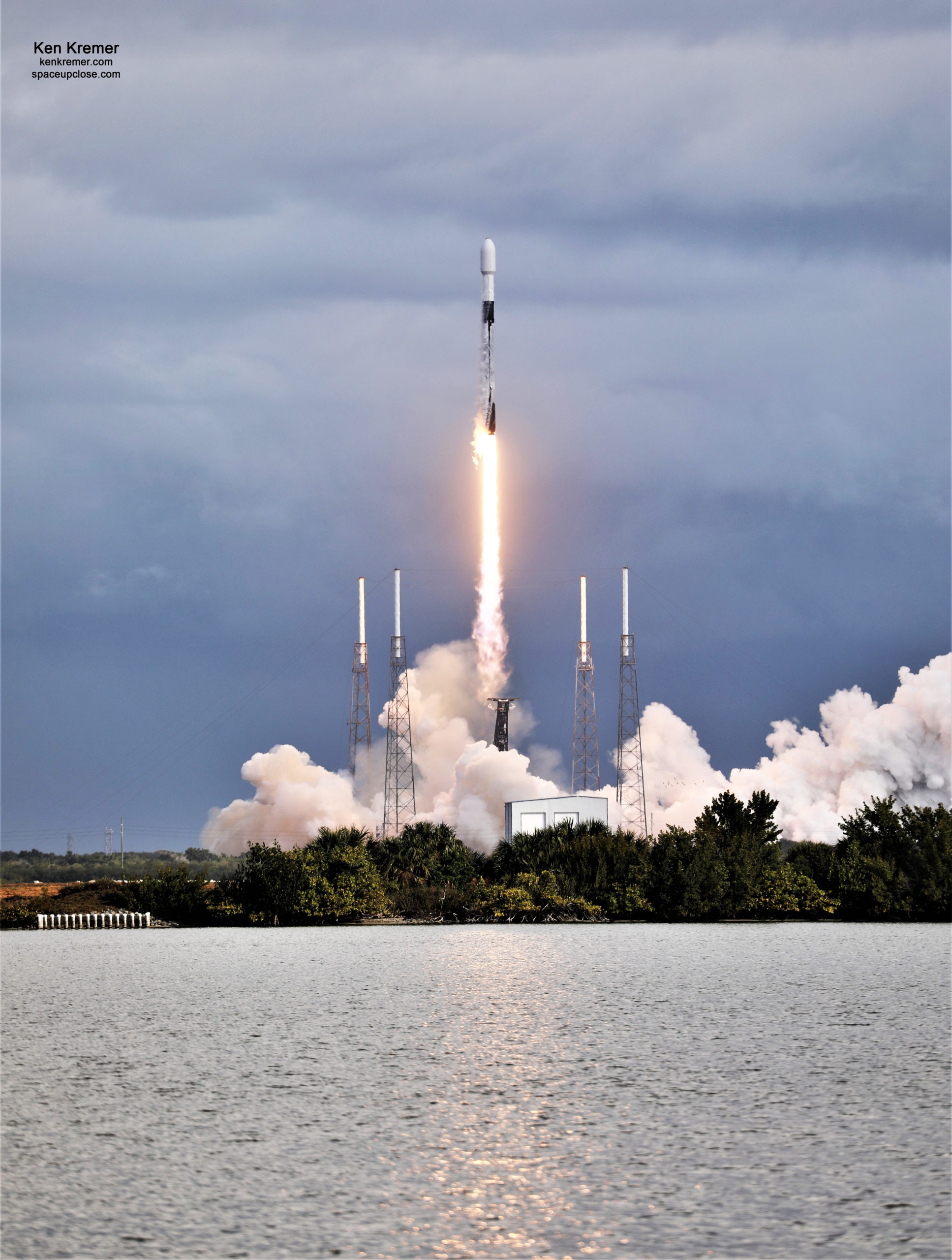
Falcon 9’s first stage booster previously supported four missions including the launch of Crew Dragon’s second demonstration mission Demo-2 last year as well as the ANASIS-II mission, a Starlink mission, and the launch of Dragon’s 21st cargo resupply mission to the International Space Station in Dec. 2020.
Following stage separation, SpaceX landed Falcon 9’s first stage on the Of Course I Still Love You (OCISLY) drone ship, which was already stationed in the Atlantic Ocean of the southern coast of Florida.
That same day, another SpaceX drone ship – ‘Just Read the Instructions’ – returned to Port Canaveral around 4 p.m. EST – with the 15-story tall booster from the history-making Falcon 9 booster that had completed its record eighth launch with the 17th Starlink launch on January 20, 2021.
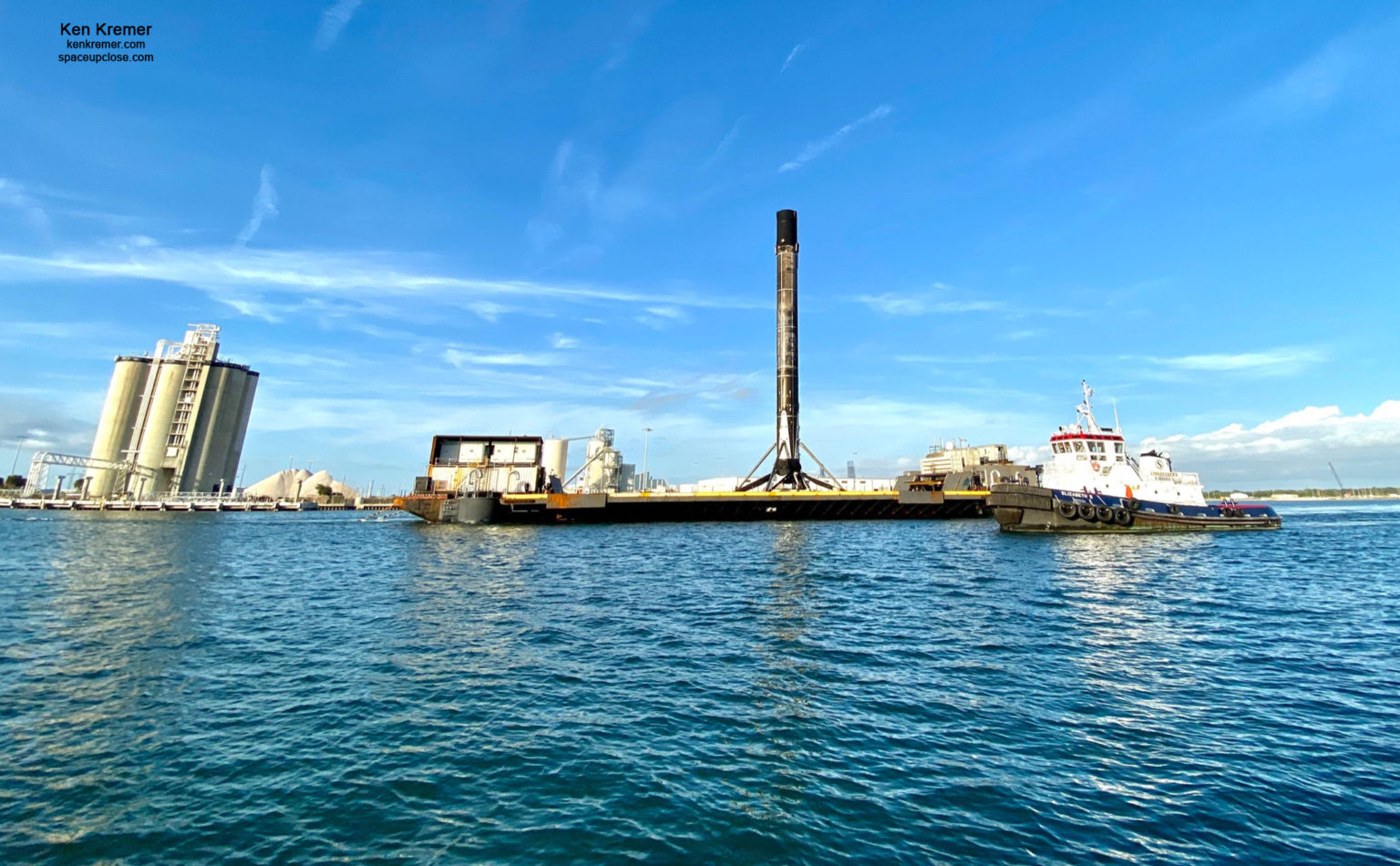
The booster was firmly grasped and held in place at the base between the legs by the hi-tech Falcon 9 Securing Robot, affectionately referred to as the Octagrabber. After eight roundtrips to space and back, the booster appeared to be in good shape with the expected increased amount of soot around the core’s exterior.
The next launch by SpaceX is the next batch of Starlink internet satellites on the 18th Starlink mission tentatively slated for Jan. 29 at approximately 8 a.m. ET.


